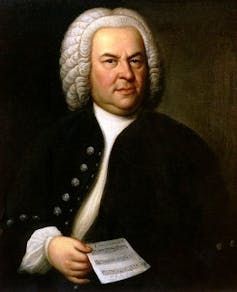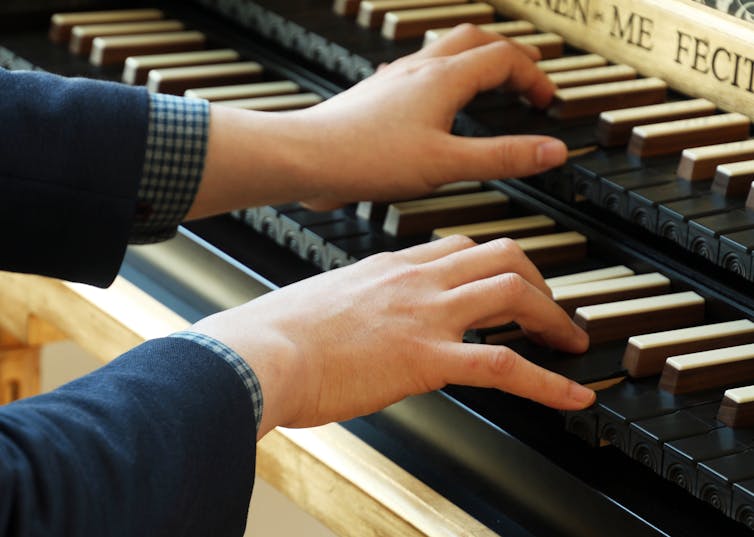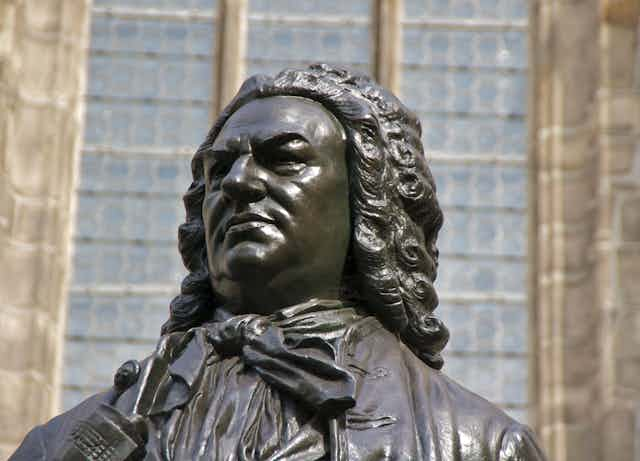In the last decade of his life, from 1740 to 1750, Johann Sebastian Bach abandoned the furious pace of composition he had maintained for over 30 years and concentrated his creative energies largely on the composition of just six works.
They were the second volume of The Well-Tempered Clavier, the Goldberg Variations, the Canonic Variations on Vom Himmel Hoch, The Musical Offering, the B Minor Mass and finally, The Art of Fugue.

In these six works he not only encapsulated all the discoveries and achievements of the previous 40 years, but extended to the outermost reaches of what was possible, the musical language bequeathed to him – which he had already done so much to develop.
The Australian composer Felix Werder once drily remarked that we cannot fully understand a work of art unless we know who paid for it. Remarkably, however, Bach was not paid for any of the above works, and indeed barely made any profit by personally financing the publication of four of them.
Thus about 30 copies of the Art of Fugue were bought, and later the copper plates used in the printing process were sold by his sons as scrap, in the hope of recouping some of the costs. So clearly Bach was driven by fierce personal inner necessity to compose these late works.
He seems to have begun working on The Art of the Fugue in 1742 and, with many interruptions, continued working on it until 1749. It was published posthumously in 1751, and in that first edition, the editors added Bach’s final composition, his short Chorale Prelude Before The Throne I Stand as compensation for the missing ending of the final fugue.
It is easy to forget that the purpose of Bach’s keyboard output was primarily pedagogical. Similarly, his three Passions (one now lost) and around 200 church cantatas were also intended pedagogically, but naturally in a profoundly more meaningful way. With this work, his primary purpose was to demonstrate all the myriad possibilities of fugal composition.
What is a fugue?
The Oxford Dictionary’s definition of a fugue is:
a polyphonic composition in which a short melodic theme, the subject, is introduced by one part or voice, and successively taken up by the others and developed by their interweaving.
Bach brought the fugue to the peak of its development in the hundreds that he composed, and this work represents the apotheosis of the form.
The entire work is based on a theme which consists of the two building blocks of Western tonal music: the three notes of a D minor chord and a scale.
Nothing could be simpler, and it strains credulity that Bach could erect such a monumental edifice with seemingly unpromising material.
But this simple theme undergoes many permutations throughout the 14 fugues and four canons (in baroque terminology, fugues also) which constitute this work. Thus in the third fugue he turns it upside down, that is, where the original melody descends it now ascends and vice versa.
In the fifth fugue, we hear it with some intervals filled in with rather jazzy, dotted rhythms.
Later still, we hear it syncopated and in triple time. Starting with the eighth fugue, new themes are introduced, but they are all in fact derived from this original theme.
The final fugue was the last he was ever to write, and also his longest. Although he had often hidden the BACH motif in his music (in German nomenclature it consists of the notes B flat, A, C and B) here – for the first and only time – he overtly introduces it as the third main theme of this massive fugue. It is this fugue which has come down to us incomplete, and the reasons for this are disputed.
We can now be certain that it was not due to Bach’s final illness, which was probably late stage diabetes, although we cannot be certain.
So the question remains open whether after his death, a final page went missing, or whether he had indeed composed it but not yet written it down, or even deliberately left it incomplete.
What we do know is that there are almost certainly 47 bars missing and that here Bach would have combined the main theme of the entire work with the other three themes of this mighty fugue.
A quandary for performers
Its incomplete state creates a musical, aesthetic, philosophical and even moral quandary for the performer. Most allow the work to trail off at the point where Bach’s manuscript ceases Others conclude with the chorale prelude mentioned above (a chorale prelude being a short contrapuntal elaboration of a traditional hymn tune). This means that after almost 80 minutes of D minor, the work ends with a four-minute chorale prelude in G major.
As one critic remarked, this makes no musical sense whatsoever, but it does make enormous non-musical sense. To the extent that music ultimately deals with existential questions of human existence, to conclude thus is perfectly valid. This writer, however, prefers to play one of the many attempted completions, in this case that by the renowned British harpsichordist Davitt Moroney.
A further contentious issue is for what instruments Bach composed this work. It is written in open score, that is, one stave for each polyphonic voice and, unlike almost every other work by Bach, no instrumentation is specified.
Already in 1751 it was advertised as being arranged in such a way as to be playable by two hands on a keyboard instrument, and this has led nearly all scholars to conclude it was conceived for the harpsichord. However, to assert that it is playable on the harpsichord is very different from saying that it was conceived for that instrument.

The American pianist and writer Charles Rosen has tellingly pointed out that the question of what instrument the work was composed for would not have occurred to a musician of Bach’s time. For the few fortunate purchasers of the original print, it would have been played on whatever instruments they could play and had available at home.
The fact that the first complete performance of this work did not occur until 1922 has often been the subject of scandalised comment. But Bach would never have envisaged a public rendition of any of these fugues, much less a performance of the complete work, which in any case was unthinkable in the context of the performance practice of the time.
As the Hungarian musicologist Paul Henry Lang has said:
each component of this work was to be painstakingly studied and slowly absorbed at home.
To drag it into the glare of the concert hall is akin to displaying mediaeval altar triptychs in modern art museums. In both cases, however, these are among the few avenues we now have to experience these marvels of Western civilisation.
As usual Bach gives us almost no performance indications whatsoever, so it is each performer’s obligation to impart to each component of this work its own distinct character. So although Die Kunst der Fuga is a work of high art of the utmost seriousness, this does not mean that each individual fugue must be played seriously.
Thus after the solemn opening fugue, the second fugue might almost be felt as a parody. The fifth, sixth and seventh fugues, all featuring prominent dotted rhythms, can be felt as, by turns, skittish, pompous and melancholy, while the 12th fugue borders on the tragic.
This is in keeping with the late works of such diverse artists as Shakespeare, Beethoven and Goya, which exemplify how pathos, humour, gravity, exuberance and tragedy are inextricably enmeshed in the deepest recesses of the human psyche.
This article is appears in conjunction with upcoming performances by Daniel Herscovitch of The Art of Fugue at Brisbane Conservatorium at 7.30 pm on April 5, Canberra ANU School of Music at 6.30 pm on April 21 and Melbourne at Monash University Clayton Campus Music Auditoriumon at 2 pm on April 28.


